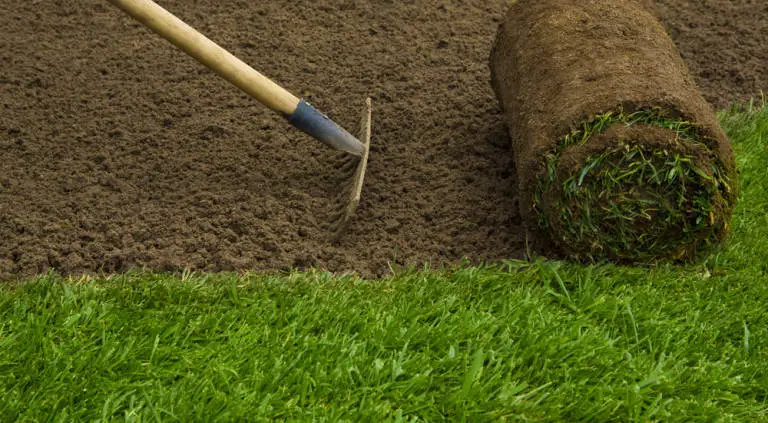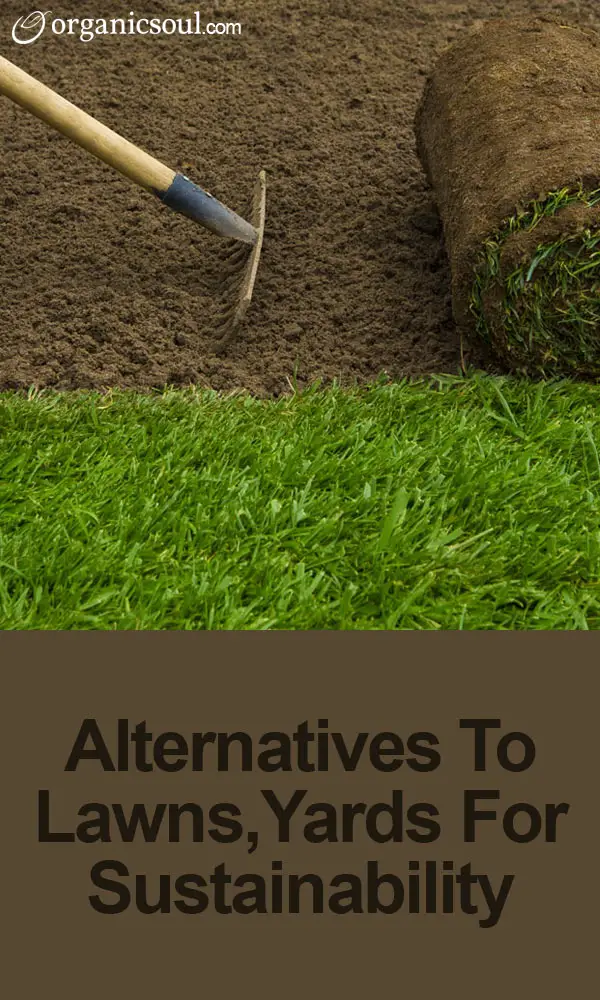
Most Americans long dream for the morning when they wake up to a cup of coffee and stare off their front porch at their immaculate green lawn. To some, the constant hum of lawn mowers is strangely comforting. But there’s a problem: having a lawn is expensive to maintain and largely unsustainable.
Like Organic Soul on Facebook
According to Dr. Bill Chameides, dean of Duke's Nicholas School of the Environment since 2007, we seriously need to reconsider the drawbacks of lawns in America. For one, lawns require Americans to use about 800 million gallons of gasoline a year to refill the mower, of which about 17 million we spill. Lawns use nearly 3 million tons of pesticides. Lawns also cost us about $30 billion annually. And to top it off, we use about 4 billion gallons of water a day in residential water use, according to the EPA.
Here are some alternatives…
1. Eco Lawn Grass
The first alternative is so-so. It will still require some maintenance, occasional watering, and compost if you desire it. Nevertheless, Eco lawns are still more sustainable than traditional lawns. For one, if you’re in Los Angeles and water your lawn once a week, normally you would need around 25,000 gallons a year to keep your lawn healthy. However, with Eco Lawns, you’ll only need 6200 gallons. Still a hefty amount, but much better than the traditional.
As another perk, you don’t need to mow these grasses. They grow to about 9 inches, but fall over to appear around 4 inches tall. Mow if you like, but when you don’t and a breeze comes through, your lawn will have a pretty ‘waving’ effect.
2. Synthetic Turf Fields
Better, but another so-so choice, in my point of view. First, it’s great that these don’t require any resources like water or gasoline. The two stroke engine of a lawn mower is worse than a car, and the amount of water used is ghastly. On top of that, most synthetic turfs are made from recycled tires and are held together by tire crumbs. This pulls some waste out of landfills and helps promote the recycling mind set.
While they enjoy these benefits, they don’t put oxygen back into the air and have been reported to get hot when in direct sunlight. Plus, some argue against their aesthetics. To me, this is kind of a moot point. All in all, these are cheaper in the long run, more sustainable, and get the job done.
3. Natural Growth
Another alternative to grass lawns is to design your lawn to fit your environment. Instead of forcing some Kentucky Bluegrass to grow in front of your Arizona home, try designing the lawn to feature natural, drought resistant plants and ecosystems. The best part about this will be the lack of maintenance required: the world around you will do all the work. The same goes for those in Southern California or Texas – maybe lay down some volcanic rock or stones, cacti, and any other native plant life. Mix it up while doing so – have patches of lawn surrounded by native plants and flowers. That way you can still have a place to put a chair or bench, but the resources required will drop dramatically.
4. Lawns To Gardens
If none of the above work for you, consider turning that lawn into a garden. True, resources like water will still be needed, but this time you’ll be getting something back other than the joy of a green lawn. In fact, you'll be able to lessen the demand for farming, decreasing the amount of water, fuel, pesticides, and fertilizers that are used. Hopefully, your soil hasn’ t suffered too much from the years of pesticides. First, plot out where you want your garden to be (consider sunlight, natural water irrigation, and shading). Next, start pulling back the sod with a hoe. You can use much of this as compost, so now would be a good time to get a compost system set up.
t suffered too much from the years of pesticides. First, plot out where you want your garden to be (consider sunlight, natural water irrigation, and shading). Next, start pulling back the sod with a hoe. You can use much of this as compost, so now would be a good time to get a compost system set up.
After you’ve cleared away your area, spade the soil and prep it for planting. Choose what you want to harvest and plant away!
Getting Past The Green
Whatever alternative you choose, rest assured knowing you’re contributing to resource protection and preservation. You’ll probably inspire your neighbors to follow suit once you have a lush garden, too. Deciding to undergo the change or have already? Leave some tips, comments, or suggestions for your fellow readers below! What works and what doesn’t?















